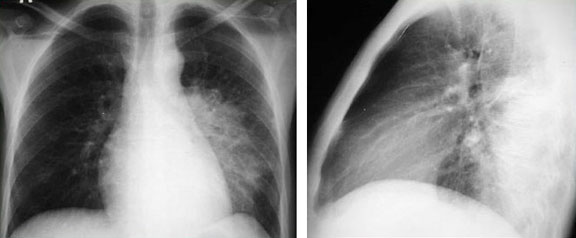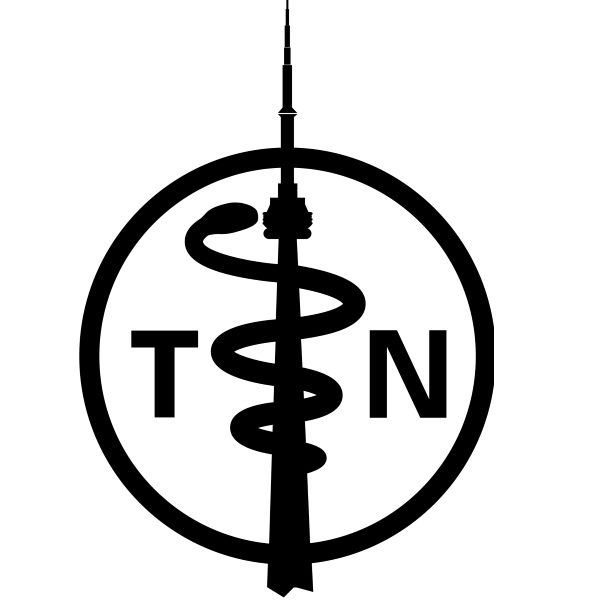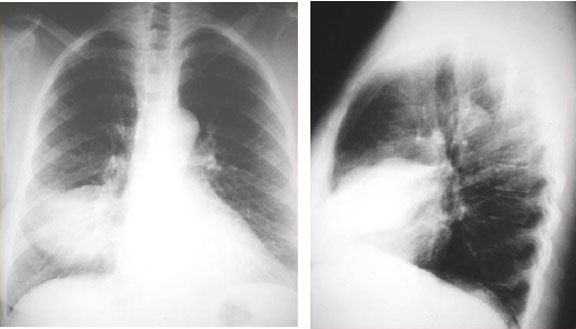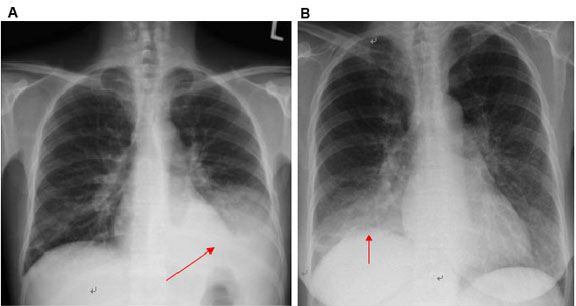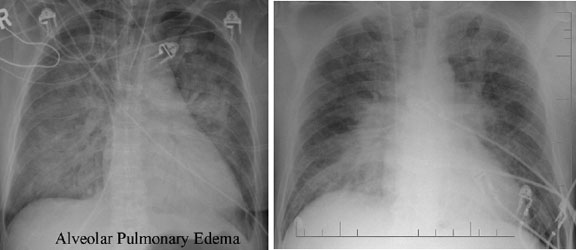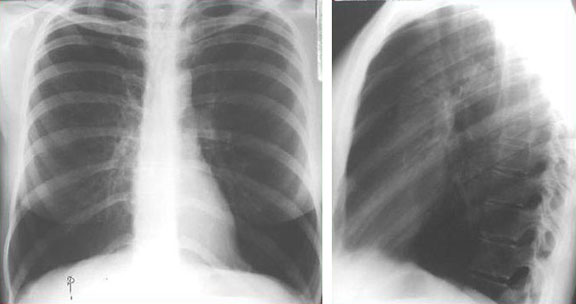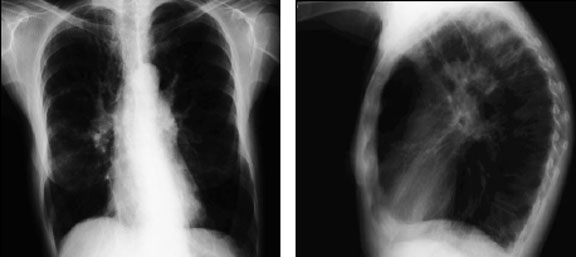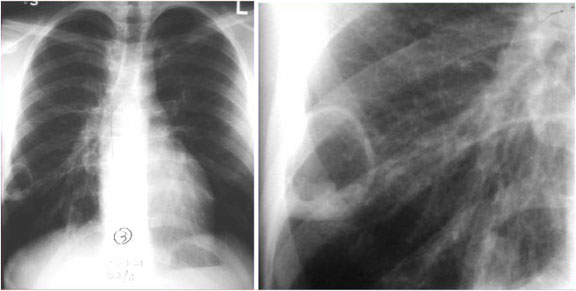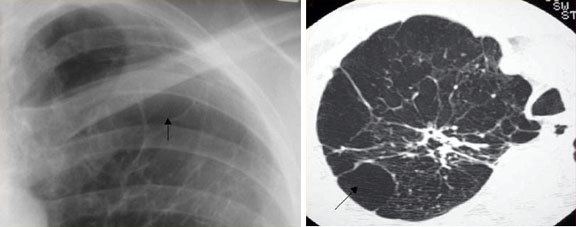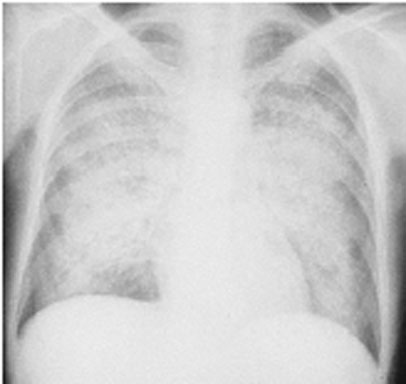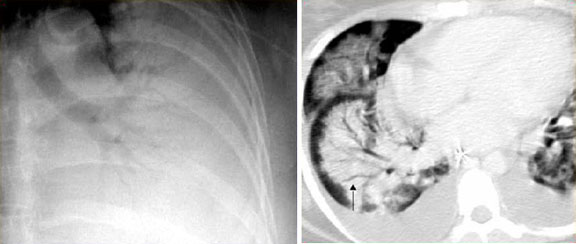Spine Sign
This young patient has left lower lobe pneumonia. The left hemidiaphragm is “silhouetted” by consolidation in the left lower lobe (note that one cannot see the entire left hemidiaphragm through the cardiac shadow).
In a normal chest x-ray, the diaphragm and mediastinal structures are visible because of the difference in radiodensity between lung and these structures (i.e. there is an “interface” between the tissues).
The “silhouette” sign refers to loss of normally appearing interfaces, implying opacification due to consolidation (most common), atelectasis, mass, etc., in adjacent lung.
The lateral film demonstrates the “spine” sign. On a normal lateral chest x-ray, as one moves down the thoracic vertebral column, the vertebral bodies appear progressively blacker. Here they appear more radioopaque due to consolidation in the overlying left lower lobe.
